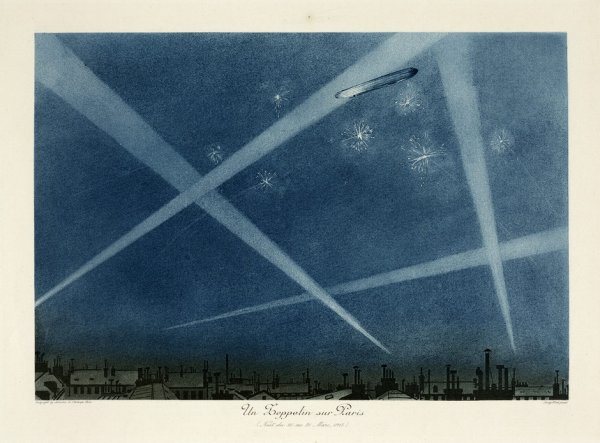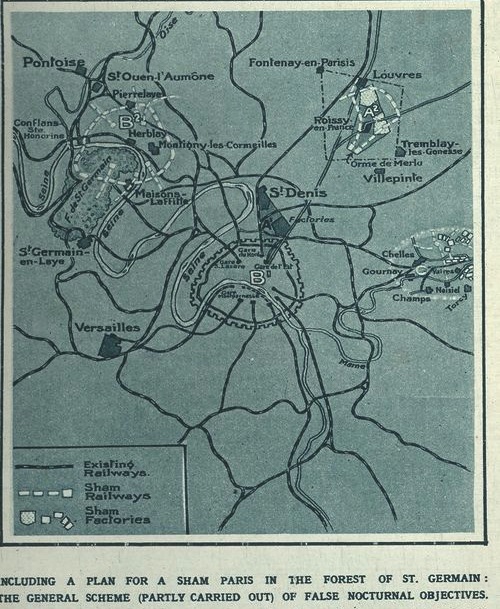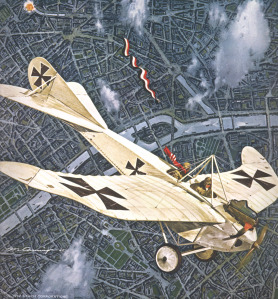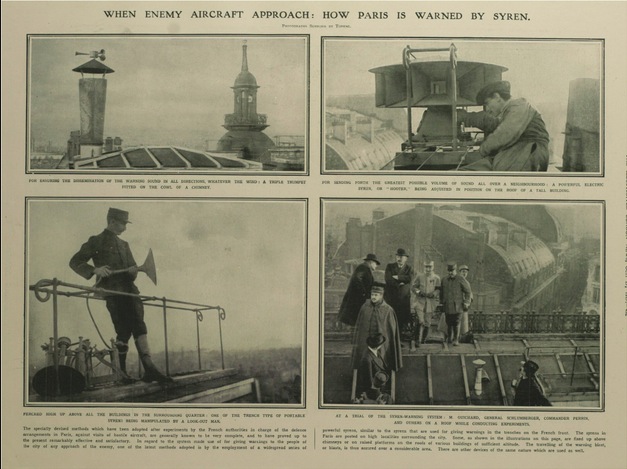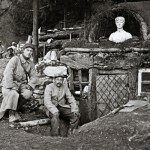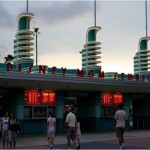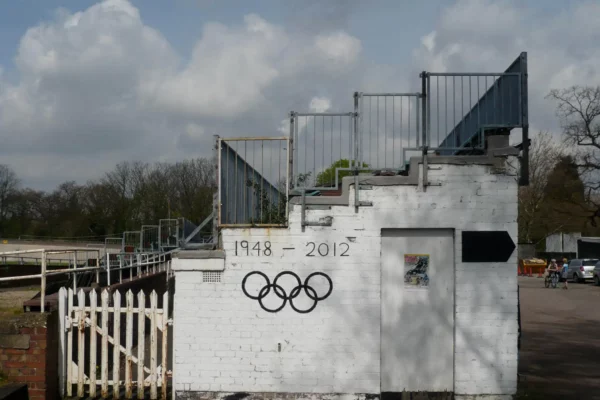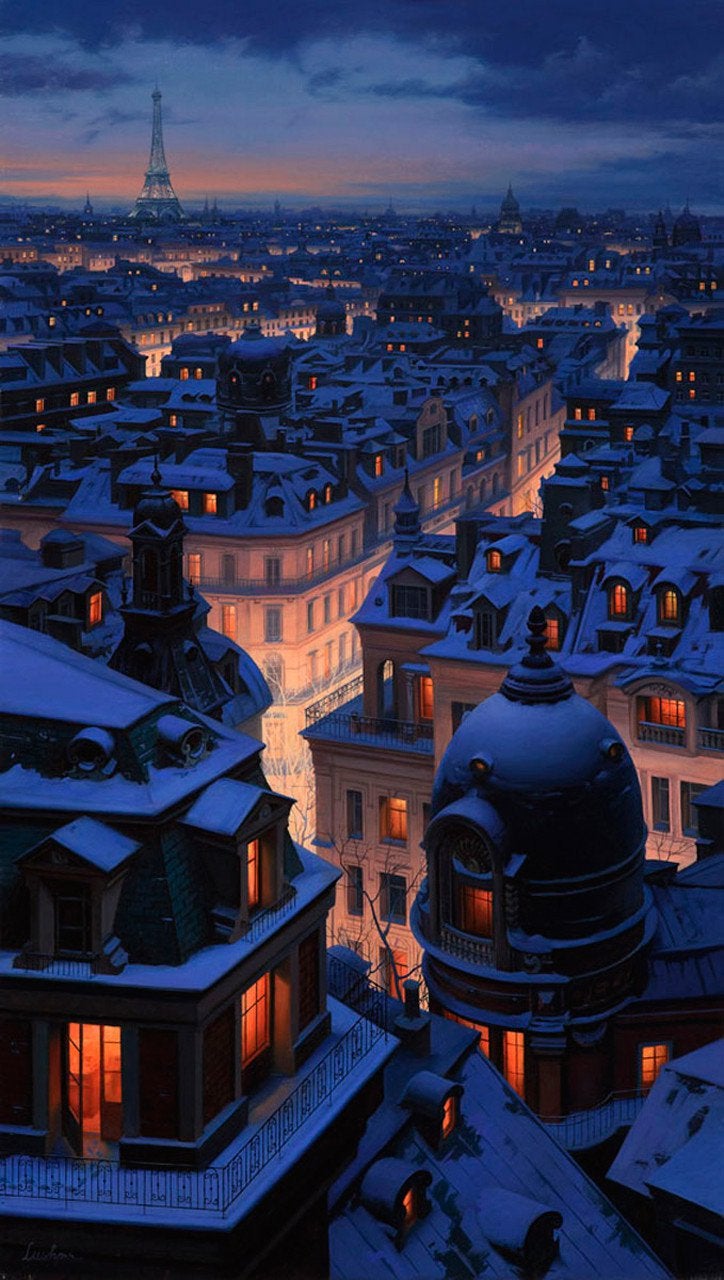
In Paris, every first Wednesday of the month at noon, without fail you can hear the eerie wail of an air raid siren from wherever you are in the city. They’ve been going since pre-World War II and have these monthly tests to make sure everything is in working order– or to serve as a spooky reminder of what life was like during wartime (that’s the theory I’m going with anyway).
And just so you get an idea of what it’s like for us Parisians minding our own business, eating croissants to suddenly hear this…
Rewind to World War I in Paris and air raids were a big and very real concern. Just over the Channel, over 5,000 bombs were dropped across Britain, killing hundreds, injuring thousands and causing millions in damage. But in light of a photo essay circa 1920 from The Illustrated London News, recently unearthed by the blog of an online bookstore Ptak Science Books, it turns out that the French were better prepared.
“Faux Paris”, “Sham Paris”, a ‘shadow city’, a fake City of Light; in 1917-1918, French authorities secretly built a life-size replica of Paris in the northern outskirts to trick German bombers into destroying the dummy city rather than the real one. “A Paris made to be destroyed,” Faux Paris came complete with street lamps, an Arc de Triomphe, a Champs Elysées, Gard du Nord, Gard de l’Est and even a fake moving train.
To bring this uninhabited fake Paris to life, electrical engineer Fernand Jacopozzi was hired; the Italian who would be better remembered later on as the man that illuminated the Eiffel Tower for the first time. In archives further investigated by Le Figaro from a French newspaper called L’Illustration, last published in 1944, it is revealed how the use of different coloured lights (whites, yellows and reds) and running furnaces mimicked the glow of homes, workshops and factories after dark.
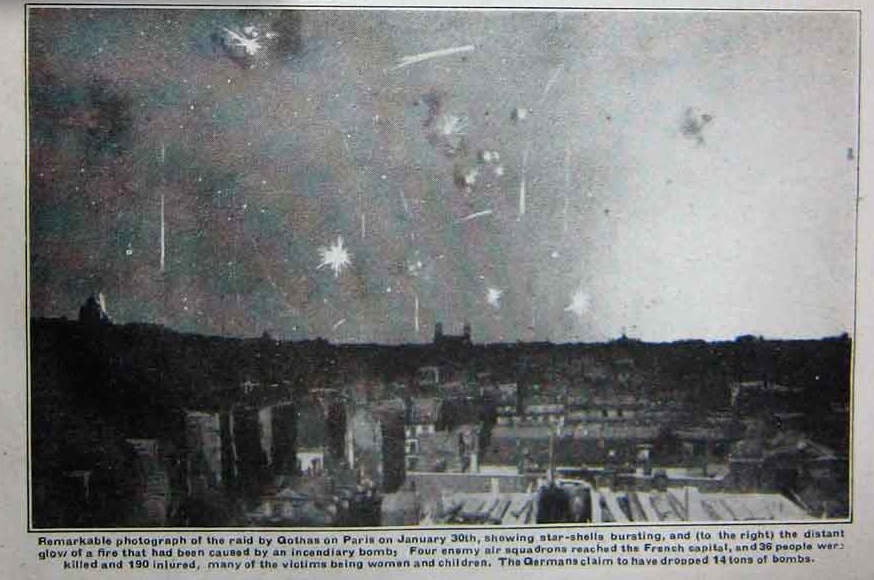
A German bombing raid on Paris
The German bomber planes, known as Gothas, had a particular preference for night bombing. The intensity of the lighting in Faux Paris was key– too intense and it would arouse the suspicion of the enemy. Buildings and replica monuments were constructed out of wood and painted; translucent fabrics were used to mimic dirty glass roofs of factories. The moving train, with cars made out of wood had lighting projecting at the sides, as if it had windows. The cloaking device ran from one end of a track to the other spanning from 1800 to 2000 meters.
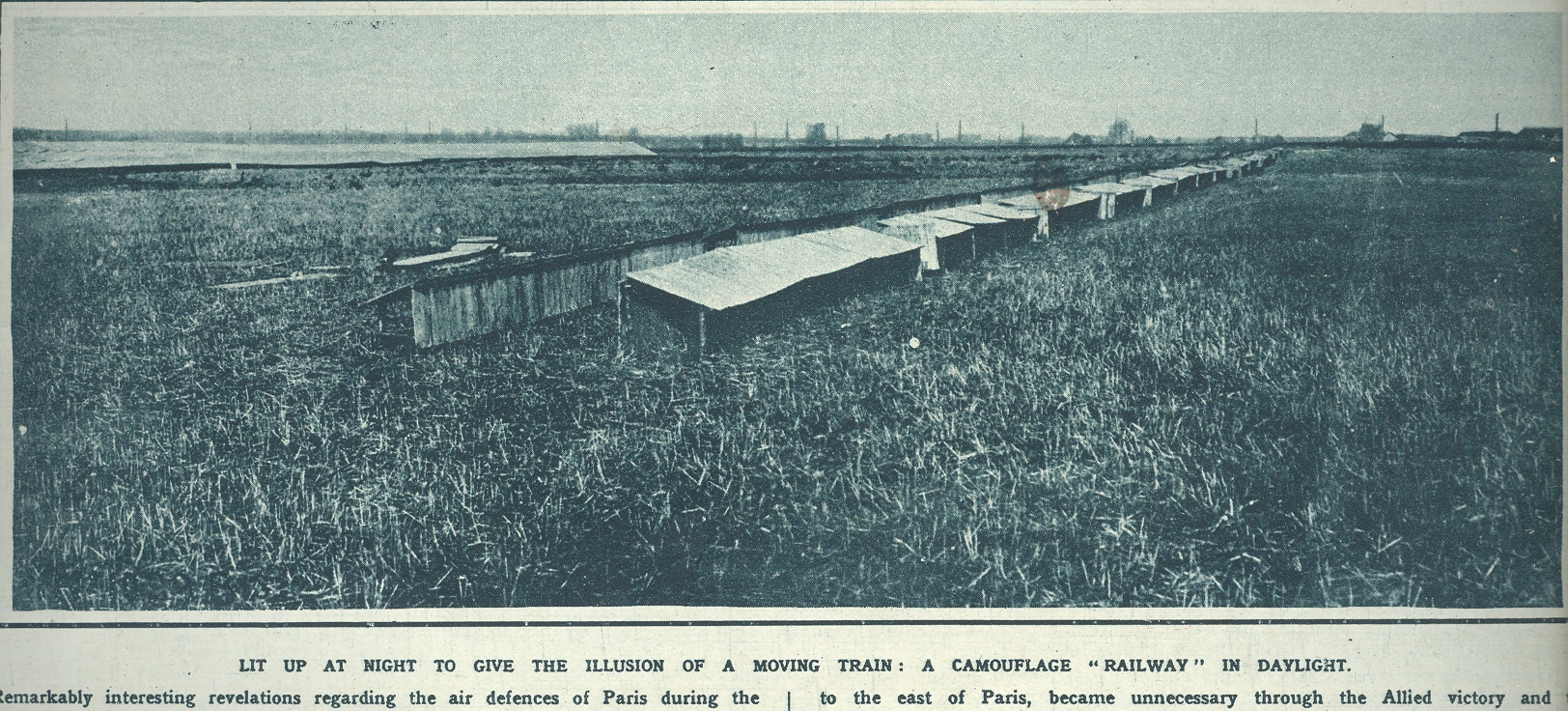
Above, the sham trains, below, the replica Gare de l’Est covered in a luminous canvas (click to enlarge).

You might be thinking, “Yeah right, who would fall for that?”. But these were the days before RADAR; the technology was barely in its infancy in 1918 and the Gothas weren’t exactly stealth bombers either (even with their Mercedes engines). Based on their capabilities, the strategy was more or less to get in, drop a bomb on any target and get out quick.
The location of Faux Paris around the commuter town of Maisons-Laffitte, 15 miles from the Notre Dame, was chosen because it sat on a similar looking stretch of the River Seine, similar to the one in Paris. A total three areas were in fact chosen in the North East, North West and East of Paris to serve as decoys, but were not quite finished before the end of the war. On September 1918, the last German air raid in Paris came and went and the shadow cities were never attacked. Fernand Jacopozzi received the prestigious Legion d’Honneur award (highest decoration in France) for his clandestine engineering project, although it’s likely few people knew exactly why he was really receiving a medal of war. Shrouded in secrecy, the replica city was quickly disassembled after the war ended and has long since been built over.
In the following years, the shadow city was viewed as a somewhat useless project and it was later discovered that the Germans had planned a similar process. But even if German pilots knew of the false target’s existence, if they had to ask, “is it real or is it fake?”, if it cast doubt in the minds of the attack, then Faux Paris was already a significant achievement.
So if you ever hear those sirens wail on the first Wednesday of the month at noon as you’re blissfully enjoying a warm croissant at a Paris café, travel back in time and imagine the little replica city of light with its moving empty trains, wooden Arc de Triomphe and flickering streetlamps lining the silent Champs Elysées.


